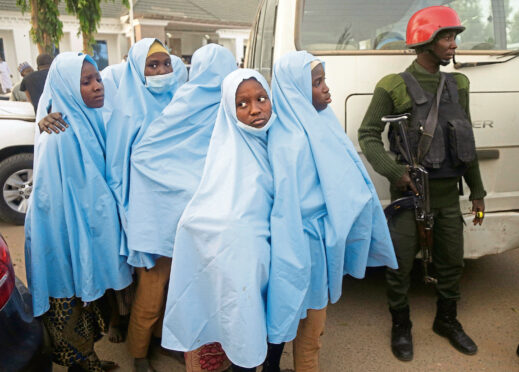
Mounting school abductions in Nigeria have disrupted the education of more than 1.3 million children in Africa’s most populous country, the United Nations says.
“Children are traumatised. Parents are scared. Teachers and school administrators are afraid. Attacks on schools are gradually spreading to areas not known to insurgencies. With education under attack, the collective future of Nigeria is under threat,” UN resident coordinator in Nigeria Edward Kallon said.
The West Africa nation has seen at least 10 abductions in the past 12 months in which 1,436 students have been taken, according to UN Children’s Agency Nigeria representative Peter Hawkins.
About 200 students are still being held and 16 children have died in the attacks, he added.
“From September 2020 to June/July 2021, up to 1.3 million children in total have been affected at some point during the academic year or learning interrupted at some point,” Hawkins told The Associated Press.
School kidnappings by gunmen – whom analysts identify as mostly young, former nomadic cattle herders – have taken place in nine different states, and targets have included everyone from pre-school children to university students.
The military is now carrying out special operations in Zamfara state to root out the attackers, known as bandits, from their hideouts.
Schools are set to open and begin the academic year this month, but many educational facilities have been shut by some governors in the northwest and central parts of Nigeria amid efforts to contain the security challenge.
Last week, as news broke of the abduction of 73 students in Zamfara, authorities closed down all primary and secondary schools across the state and three days later, local media reported that the telecommunications access in the state has been blocked. Some of the freed schoolchildren have told AP that they were warned not to return to school or they would face further violence.
“They asked us not to go back to school, that they will make sure they shut down all the schools in Kaduna state,” said Victory Sani, 20, who was one of the nearly 40 students who were held by gunmen in a forest for seven weeks after they were kidnapped in Kaduna State.
The health of the freed students is also a source of concern. Some of those who have been seized from their schools are as young as four.
Parents have said that after selling off most of what they have to pay for ransoms demanded by the gunmen, they don’t have enough to pay their children’s medical bills. “We struggled in prayer to rescue them (and) we have to struggle hard to improve their health,” said Saidu Tegina, whose two children were among the 91 pupils kidnapped in Niger State.

Enjoy the convenience of having The Sunday Post delivered as a digital ePaper straight to your smartphone, tablet or computer.
Subscribe for only £5.49 a month and enjoy all the benefits of the printed paper as a digital replica.
Subscribe